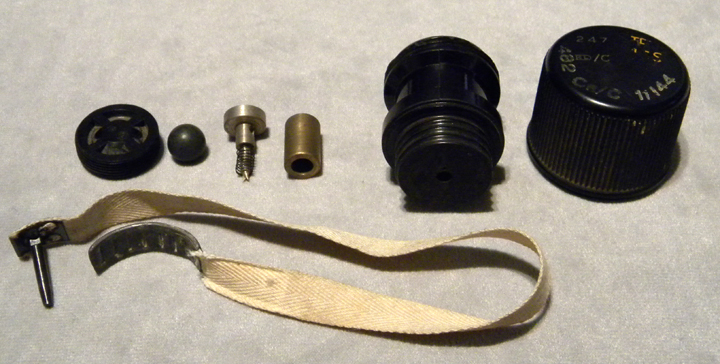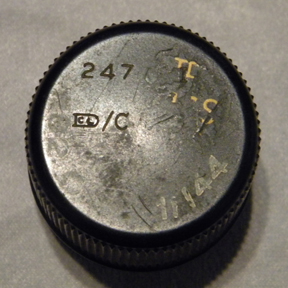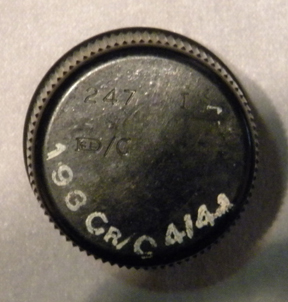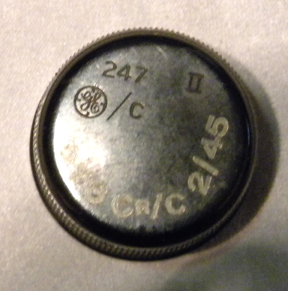Fuze No. 247 Mk. 1/2/3
Back
Fuze No. 247 Mk. 1
This fuze of British origin was manufactured
in Britain, Canada, and Australia.
It was copied by the US as an impact fuze for the T33 grenade but was not
adopted.
The fuze is of the “Allways” type, meaning
that it is designed to function on impact no matter what angle it strikes.
Originally designed for use on the No. 69 Mk. I grenade, its use was
extended to other grenades as the need arose.
Minor modifications to meet the requirements of different grenades were
made to the fuze.
The fuze body is made of bakelite.
It is internally recessed to accommodate the detonator pellet, striker,
creep spring and weighted ball. A
threaded cap closes the top and there is a flash hole in the bottom.
In the original design the bottom of the body has a small spigot
surrounding the flash hole. The
spigot was not suitable for all types of grenades and it was found to be
unnecessary so most fuzes were produced with a flat bottom.
The type with spigot are quite rare.
The centre of the body is reduced in diameter to form a seat for the
safety bolt and weighted tape. A
hole through the reduced portion allows the safety bolt to fit through into the
striker. The safety bolt is
attached to one end of an 11.5 inch tape with a lead weight at the other.
The tape is wound clockwise around the fuze body.
The top of the body is threaded to match threading in the safety cap.
The safety fits over the fuze and screws on to hold the tape in place.
A small 1.2 grain detonator is mounted in the detonator pellet.
The striker point is sheared to form two points.
The striker and creep spring fit into the detonator pellet with the
striker held in the safe position by the safety bolt once the fuze is assembled.
A lead ball fits between the top of the striker (which is concave) and
the concave bottom of the threaded cap that closes the body.
The detonator pellets may be made of brass or
zinc. The No. 247 Mk. 1A indicates
a brass pellet, the No. 247 Mk. IZ
indicates a zinc pellet.
In the No. 69 Mk. I
and No. 73 Mk. I grenades the original design with spigot could be used
but were normally fitted with the type with spigot removed.
The No. 77 Mk. I grenade could not be used with the original type fuze.
In the No. 79 Mk. I grenade, the detonator
was filled with a different composition and a one inch piece of quickmatch
inserted in the flash hole. The
fuze cap was painted green to identify it.
In the No. 82 Mk. I grenade, the weighted
tape is reduced to 4.5 inches to reduce arming time.
The cap is painted red.
| |
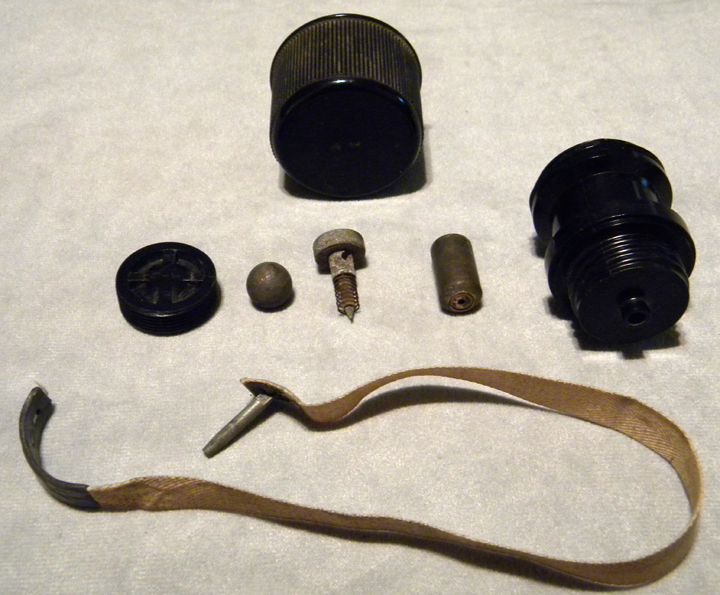 |
|
| |
Early manufacture 247 fuze, note the spigot on
the bottom of the body |
|
|
|
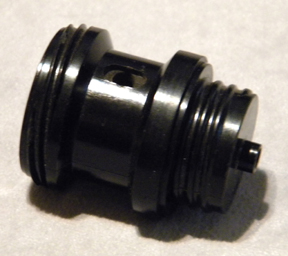 |
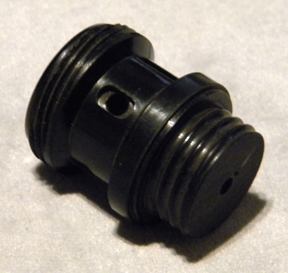 |
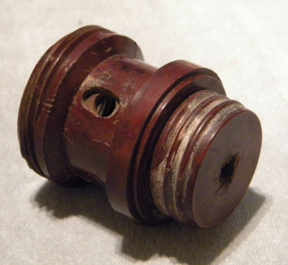 |
|
| |
Early type body with spigot |
Most common type of body without spigot |
Australian manufacture |
|
| |
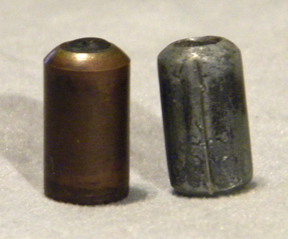 |
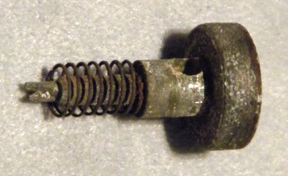 |
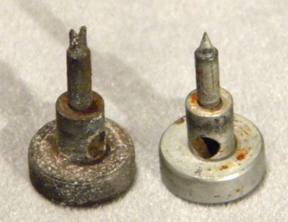 |
|
| |
Detonator pellets, brass on left, zinc on right |
Striker |
Difference in strikers, Mk. I on left, Mk. II on
right |
|
| |
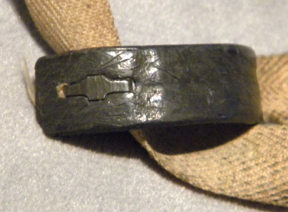 |
|
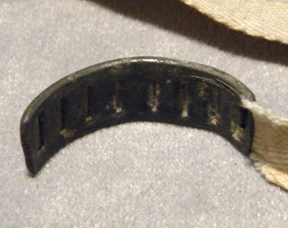 |
|
| |
Early type weight, held on by a staple |
|
normal type weight crimped onto tape |
|
Fuze No. 247 Mk.
2
This
fuze differs from the Mk. I by having a different design of striker.
The point is shorter and is not sheared so has only one point.
The detonator pellet is made of lead antimony and has a different form of
chamber for the detonator. The
detonator is larger with 1.7 grains instead of the smaller 1.2 grain detonator
of the Mk. I.
Fuze No. 247 Mk. 3
This fuze was introduced to facilitate ease of assembly
and differs only in the body. The
cup seat for the lead ball is moulded integrally with the body and the bottom of
the fuze is closed with a screwed plug.
The fuze is assembled from the bottom instead of the top.
Thanks to Paul, here is the Mk. 3
|
|
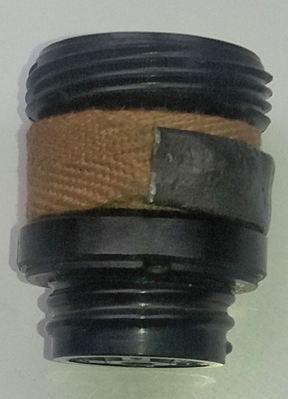 |
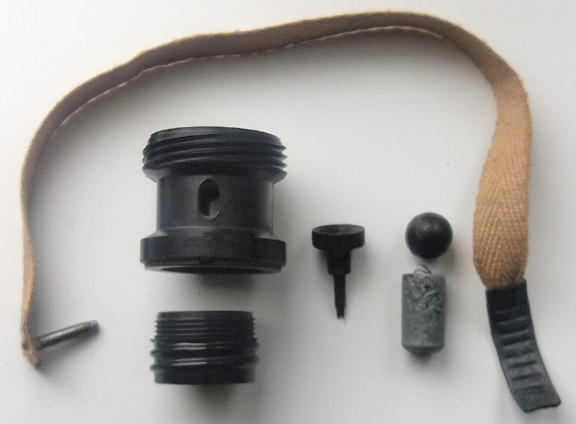 |
|
| |
No. 247 Mk. 3 (Paul
Spence) |
No. 247 Mk. 3 disassembled (Paul Spence) |
|
Initially the fuzes were not marked with
anything other than the manufacturers mark.
After extension to other grenades the fuzes were marked more clearly.
The fuze is marked on the
top of the safety cap with the designation, manufacturers mark, and year of
manufacture. The markings can be
stamped or cast into the cap.
Filled fuzes have additional markings stencilled on the cap and on the exposed
surface of the tape. These markings
give the fillers initials or mark, date of filling, lot number and the letter A
or Z to indicate the material of the detonator pellet.
In addition the cap may be painted red or green as detailed above.
British and Canadian fuzes are made of black
bakelite, Australian fuzes are made of red bakelite.
